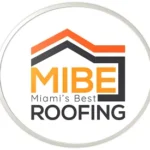The Ultimate Guide to Flat Roof Repair: Tips and Tricks for a Leaky-Free Home
Understanding Flat Roofs and Their Common Issues
As the name suggests, flat roofs are designed to be flat, with a slight pitch to allow water to run off. Unlike sloping roofs, flat roofs are more prone to leaks and water accumulation, making them more challenging to repair. The most common issues with flat roofs include cracking, blistering, and punctures, which can lead to water damage, mold growth, and structural problems. Understanding the root causes of these issues is crucial for effective repair.
Identifying the Causes of Leaks and Water Damage
Leaks and water damage on flat roofs can be caused by a variety of factors, including improper installation, poor maintenance, and weather conditions. Heavy rainfall, strong winds, and extreme temperatures can all contribute to the deterioration of the roof’s membrane and underlying structure. It’s essential to identify the underlying causes of leaks and water damage to ensure that the repair is effective and long-lasting.
Preventing Leaks and Water Damage
Preventing leaks and water damage on flat roofs is crucial to maintaining the integrity of the structure. Regular inspections and maintenance are essential to identify and address potential issues before they become major problems. Applying a waterproof coating, sealing gaps and cracks, and installing a drainage system can all help to prevent leaks and water damage.
Types of Flat Roof Repair Methods
There are several methods used to repair flat roofs, including patching, coating, and replacement. Patching involves repairing small holes and cracks using specialized materials, while coating involves applying a waterproof layer to the entire roof. Replacement involves removing the existing roof and installing a new one. The choice of repair method depends on the severity of the damage and the type of roof.
Choosing the Right Materials for Flat Roof Repair
Choosing the right materials for flat roof repair is crucial to ensure that the repair is effective and long-lasting. The most common materials used for flat roof repair include EPDM (ethylene propylene diene monomer), PVC (polyvinyl chloride), and TPO (thermoplastic polyolefin). Each material has its own advantages and disadvantages, and the choice of material will depend on the type of roof, climate, and budget.
Patching and Coating Techniques
Patching and coating techniques are used to repair and protect flat roofs. Patching involves applying a specialized patching material to the damaged area, while coating involves applying a waterproof layer to the entire roof. Both techniques can be used to repair small holes and cracks, as well as to prevent leaks and water damage.
Drainage Systems and Gutters
Drainage systems and gutters play a crucial role in preventing leaks and water damage on flat roofs. A well-designed drainage system can help to remove water from the roof, reducing the risk of leaks and water damage. Gutters and downspouts should be cleaned and maintained regularly to ensure that they are functioning properly.
Replacing Flat Roofs
Replacing a flat roof is a major undertaking that requires specialized skills and equipment. The process involves removing the existing roof, repairing any underlying damage, and installing a new roof. Replacing a flat roof can be a costly and time-consuming process, but it is often necessary to ensure the integrity of the structure.
Flat Roof Repair Cost and Maintenance
The cost of flat roof repair can vary widely, depending on the type of repair, materials used, and location. Regular maintenance is essential to prevent leaks and water damage, and to extend the life of the roof. Maintenance tasks include inspecting the roof, cleaning gutters and downspouts, and applying a waterproof coating.
Conclusion
In conclusion, flat roof repair requires a combination of knowledge, skills, and materials. By understanding the causes of leaks and water damage, identifying the right repair methods, and choosing the right materials, homeowners can ensure that their flat roofs are leak-free and long-lasting. Regular maintenance is essential to prevent leaks and water damage, and to extend the life of the roof. By following the tips and tricks outlined in this guide, homeowners can ensure that their flat roofs are in top condition for years to come. freeslots dinogame telegram营销




